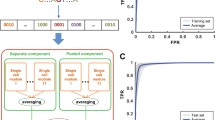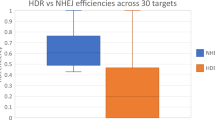Abstract
A genome is a complete DNA segment that contains the genetic information of how the organism cell lives and performs its functions, such as producing proteins. The field of biology that studies the complete information about the genome is known as genomics. It introduces concepts and techniques about the sequence, functions, evolution, and mapping of the genome. Many genomics applications in broad areas improve creatures’ lives via precise diagnosis and effective treatment. Analyzing the vast amount of genetic information generated from medical technologies and devices is a complicated process. Therefore, implementing deep learning and machine learning with other methods such as feature selection and clustering reduces cost and time spent and enhances prediction accuracy. Scientists can discover hidden patterns in genetic information by utilizing machine learning models, finding mutations in gene expression, and selecting precise locations in gene editing. This study reviewed recent studies that applied machine learning approaches in genomics and focused explicitly on gene editing. One of the hot topics for gene editing research is off-target mutation prediction using Clustered Regularly Interspaced Short Palindromic Repeats (CRISPR) and CRISPR-associated protein 9 (CRISPRCas9). Prediction techniques in gene editing have been developed to determine values based on mismatches in the CRISPR-Cas9 guide series. This paper summarizes recent studies that have employed machine learning and deep learning methods in different genomics applications and presents a comparative analysis of the discussed studies.
Access this chapter
Tax calculation will be finalised at checkout
Purchases are for personal use only
Similar content being viewed by others
References
Miko, I., LeJeune, L.: Essentials of Genetics. Cambridge NPG Educ. (2009)
Khurana, S.P.: Biotechnology: Principles and Process. Studium (2015)
Almutiri, T., Saeed, F.: Review on feature selection methods for gene expression data classification. In: International Conference of Reliable Information and Communication Technology, pp. 24–34. Springer, Berlin (2019)
Matilainen, M.: Identification and characterization of target genes of the nuclear receptors VDR and PPARs (2007)
Glick, B.R., Patten, C.L.: Molecular Biotechnology: Principles and Applications of Recombinant DNA. Wiley, Hoboken (2017)
Baxevanis, A.D., Ouellette, F.: Bioinformatics: A Practical Guide to the Analysis of Genes and Proteins. Willey, NY, USA (2001)
Boffetta, P., Hainaut, P.: Encyclopedia of Cancer. Academic Press, Cambridge (2018)
Rittschof, C.C., Robinson, G.E.: Behavioral genetic toolkits: toward the evolutionary origins of complex phenotypes. In: Current Topics in Developmental Biology, pp. 157–204. Elsevier, Amsterdam (2016)
Marlow, F.L.: Maternal Effect Genes in Development. Academic Press, Cambridge (2020)
Williams, K.L.: Gene mapping. In: Encyclopedia of Bioinformatics and Computational Biology, pp. 242–250. Academic Press, Cambridge (2019)
Pasquier, J., Cabau, C., Nguyen, T., Jouanno, E., Severac, D., Braasch, I., Journot, L., Pontarotti, P., Klopp, C., Postlethwait, J.H.: Gene evolution and gene expression after whole genome duplication in fish: the PhyloFish database. BMC Genomics 17, 1–10 (2016)
Hsu, P.D., Lander, E.S., Zhang, F.: Development and applications of CRISPR-Cas9 for genome engineering. Cell 157, 1262–1278 (2014)
Huang, Y.-W., Lee, H.-J.: Cell-penetrating peptides for medical theranostics and targeted drug delivery. In: Peptide Applications in Biomedicine, Biotechnology and Bioengineering, pp. 359–370. Elsevier, Amsterdam (2018)
Charlier, J., Nadon, R., Makarenkov, V.: Accurate deep learning off-target prediction with novel sgRNA-DNA sequence encoding in CRISPR-Cas9 gene editing. Bioinformatics (2021). https://doi.org/10.1093/bioinformatics/btab112
Muhammad Rafid, A.H., Toufikuzzaman, M., Rahman, M.S., Rahman, M.S.: CRISPRpred (SEQ): a sequence-based method for sgRNA on target activity prediction using traditional machine learning. BMC Bioinform. 21, 1–13 (2020)
Molla, K.A., Yang, Y.: Predicting CRISPR/Cas9-induced mutations for precise genome editing. Trends Biotechnol. 38, 136–141 (2020)
Shen, M.W., Arbab, M., Hsu, J.Y., Worstell, D., Culbertson, S.J., Krabbe, O., Cassa, C.A., Liu, D.R., Gifford, D.K., Sherwood, R.I.: Predictable and precise template-free CRISPR editing of pathogenic variants. Nature 563, 646–651 (2018)
Allen, F., Crepaldi, L., Alsinet, C., Strong, A.J., Kleshchevnikov, V., De Angeli, P., Páleníková, P., Khodak, A., Kiselev, V., Kosicki, M.: Predicting the mutations generated by repair of Cas9-induced double-strand breaks. Nat. Biotechnol. 37, 64–72 (2019)
Leenay, R.T., Aghazadeh, A., Hiatt, J., Tse, D., Roth, T.L., Apathy, R., Shifrut, E., Hultquist, J.F., Krogan, N., Wu, Z.: Large dataset enables prediction of repair after CRISPR–Cas9 editing in primary T cells. Nat. Biotechnol. 37, 1034–1037 (2019)
Eitzinger, S., Asif, A., Watters, K.E., Iavarone, A.T., Knott, G.J., Doudna, J.A., Minhas, F.A.A.: Machine learning predicts new anti-CRISPR proteins. Nucleic Acids Res. 48, 4698–4708 (2020)
Wang, J., Xiang, X., Bolund, L., Zhang, X., Cheng, L., Luo, Y.: GNL-Scorer: a generalized model for predicting CRISPR on-target activity by machine learning and featurization. J. Mol. Cell Biol. (2020)
Cordero-Maldonado, M.L., Perathoner, S., Van der Kolk, K.J., Boland, R., Heins-Marroquin, U., Spaink, H.P., Meijer, A.H., Crawford, A.D., De Sonneville, J.: Deep learning image recognition enables efficient genome editing in zebrafish by automated injections. PLoS ONE 14, 1–18 (2019). https://doi.org/10.1371/journal.pone.0202377
Chuai, G., Ma, H., Yan, J., Chen, M., Hong, N., Xue, D., Zhou, C., Zhu, C., Chen, K., Duan, B.: DeepCRISPR: optimized CRISPR guide RNA design by deep learning. Genome Biol. 19, 80 (2018)
Lin, J., Wong, K.-C.: Off-target predictions in CRISPR-Cas9 gene editing using deep learning. Bioinformatics 34, i656–i663 (2018)
Doench, J.G., Fusi, N., Sullender, M., Hegde, M., Vaimberg, E.W., Donovan, K.F., Smith, I., Tothova, Z., Wilen, C., Orchard, R.: Optimized sgRNA design to maximize activity and minimize off-target effects of CRISPR-Cas9. Nat. Biotechnol. 34, 184–191 (2016)
Singh, R., Kuscu, C., Quinlan, A., Qi, Y., Adli, M.: Cas9-chromatin binding information enables more accurate CRISPR off-target prediction. Nucleic Acids Res. 43, e118–e118 (2015)
Hsu, P.D., Scott, D.A., Weinstein, J.A., Ran, F.A., Konermann, S., Agarwala, V., Li, Y., Fine, E.J., Wu, X., Shalem, O.: DNA targeting specificity of RNA-guided Cas9 nucleases. Nat. Biotechnol. 31, 827–832 (2013)
Stemmer, M., Thumberger, T., del Sol Keyer, M., Wittbrodt, J., Mateo, J.L.: CCTop: an intuitive, flexible and reliable CRISPR/Cas9 target prediction tool. PLoS ONE 10, e0124633 (2015)
Author information
Authors and Affiliations
Editor information
Editors and Affiliations
Rights and permissions
Copyright information
© 2022 The Author(s), under exclusive license to Springer Nature Singapore Pte Ltd.
About this paper
Cite this paper
Almutiri, T., Saeed, F., Alassaf, M. (2022). A Survey of Machine Learning and Deep Learning Applications in Genome Editing. In: Saeed, F., Al-Hadhrami, T., Mohammed, E., Al-Sarem, M. (eds) Advances on Smart and Soft Computing. Advances in Intelligent Systems and Computing, vol 1399. Springer, Singapore. https://doi.org/10.1007/978-981-16-5559-3_13
Download citation
DOI: https://doi.org/10.1007/978-981-16-5559-3_13
Published:
Publisher Name: Springer, Singapore
Print ISBN: 978-981-16-5558-6
Online ISBN: 978-981-16-5559-3
eBook Packages: Intelligent Technologies and RoboticsIntelligent Technologies and Robotics (R0)




